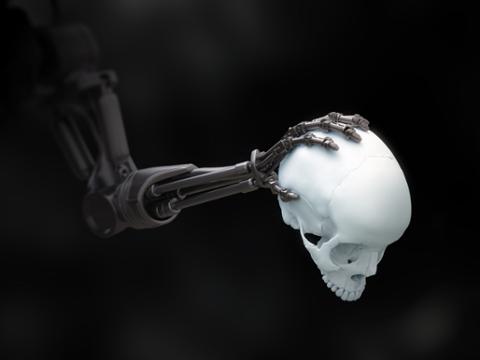In the coming decades, there’s a good chance that tech jobs will represent the lion’s share of the U.S. job market. From 2012 to 2017, the technology share of the job marketplace rose 17 percent—but tech-job gains aren’t necessarily coming from the tech sector.
Indeed, new tech jobs are showing up in traditionally non-tech industries such as agriculture and energy. In fact, the share of tech workers in the energy sector nearly doubled between 2012 and 2017, from 3.2 percent to 6 percent. Agriculture experienced an 89 percent increase in tech workers.
Part of this increase can be attributed to heightened demand for advanced digital skills in occupations that previously required only a "medium" digital skill level. Outside of energy and agriculture, this includes occupations ranging from finance professionals and HR specialists to nurses and administrative workers.
For example, a project manager working in agriculture could be running a field study testing different seeds for crop science. They might have previously performed the task manually, on paper. But without a digital platform, there’s no automated data analysis. So, perhaps this project manager might lean on past technology experience to bring on a data analysis platform, boosting efficiency by migrating from Excel to a Software-as-a-Service (SaaS) platform.
A “tech worker” can also be as simple as a regional manager implementing a learning management system (LMS) in the training workflow. By doing so, the manager can improve operations and visibility by tracking who completes which modules and pushing out new initiatives to the entire team, modernizing the organization’s learning and development efforts.
As these examples (and the data) suggest, any company can become a tech company in the digital age, but only if it invests in areas that support digital innovation. With more employees with tech backgrounds joining non-tech sector organizations and using advanced digital tools in their daily workflows, business leaders must highlight the role of technology and provide teams with the tools necessary to fully support digital transformation.
Bringing IT Employees to the Forefront of the Organization
Too often, organizations perceive the IT department as a tool to support business goals rather than an integral part of the operation as a whole. In fact, IT is sometimes considered separate from the business entirely.
However, in an age of rapid digital transformation, organizations must integrate IT departments and IT service management (ITSM) efforts into core business practices. If not, organizations could set themselves up for significant roadblocks later on. Beyond troubleshooting new technology issues and assisting with updates and outages, IT helps leaders vet the security of new tools, understand how new technology compliments pre-existing tools, and access strategic insights for integrations and further applications —all essential for a successful digital transformation.
While integration plans vary by organization and industry (digital transformation strategy is not one-size-fits-all), organizations should start by providing IT teams with solutions that incorporate innovative technologies such as AI, machine learning, and automation. With modern tools and complete data at their disposal, IT workers can operate at maximum efficiency in support of the technology that new employees bring to the organization and rely on to do their jobs effectively.
Supporting Tech Employees with the Right IT Innovation
More than a third of IT professionals spend up to two hours each day on tasks that could be easily automated. With more and more organizations ramping up their digital efforts, these two hours will become critically necessary for IT teams to address a growing volume of requests that result from new technology.
Efficiency improvements enable IT workers to move beyond a traditional break-fix role and into efforts that support higher value activities. One of the first steps in enabling IT to operate efficiently is to embrace A.I. and the automated processes it powers.
For example, A.I. in the service desk can identify potential problems by recognizing when multiple employees across the organization have submitted similar tickets. Rather than forcing IT technicians to spend time working on these tickets one-by-one in a vacuum, a smarter ITSM solution would enable IT teams to address the broader problem, while quickly communicating the issue to all impacted employees.
Automating ITSM to Support a Rise in Tech Workers
Automated processes are at the heart of efficiency gains. Automated digital support in the form of employee self-service solutions can allow IT employees to bypass basic tasks such as software updates and password resets, and effectively route other requests to the right place. A robust service portal can provide employees with one-click access to available service requests, like a menu of services, which are powered by automated workflows on the backend. The portal can also provide employees with a familiar search function, again powered by A.I., that guides them to DIY solutions in a knowledge base simply by typing in a few keywords.
Beyond offering solutions, automation functions as a prioritization tool within the service desk. Instead of managing a standard queue of requests, modern service desks can route tickets based on priority or type. As a result, IT employees no longer waste portions of their day sorting through a pile of tickets and repeating the same resolutions.
From an IT employees’ perspective, when the service desk solves low-level issues and pushes critical tasks to the front of the queue, they have more time to focus on core responsibilities. And that means the majority of their time and energy is funneled into supporting the organization’s broader business goals and new technological endeavors.
Integrate IT to Support Digital Transformation Across the Organization
Smart service desks do more than just automate low-level tasks. They also integrate with the new digital business tools, from CRMs to HR applications. This integration is critical in unifying IT with the rest of the digitally transforming organization, which makes IT a central part of the business moving forward.
With the right IT assistance to support their technological endeavors, employees with tech backgrounds can quickly become drivers of innovation and support large-scale organizational change at enterprises traditionally lagging behind. If your organization or industry is not currently demanding this sort of technological support and change, the numbers suggest it will in the future.
Matt Cox is Senior Director of Technical Services, ITSM at SolarWinds



